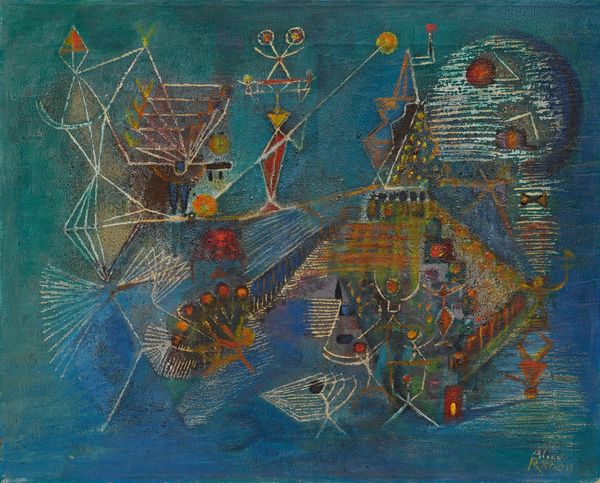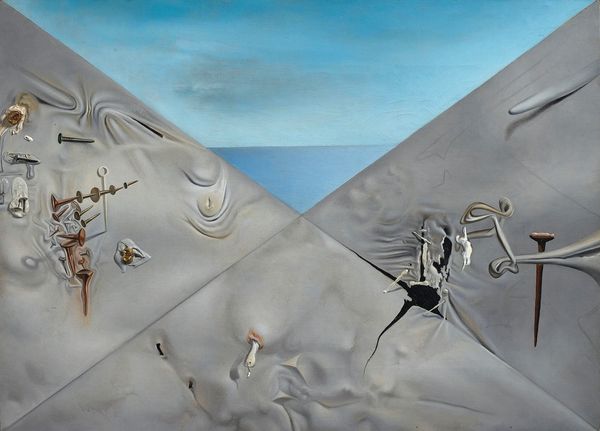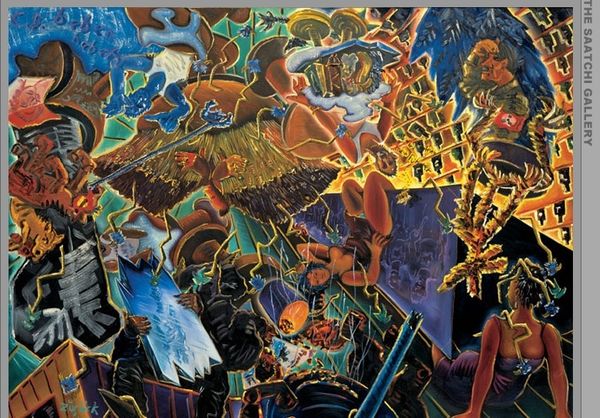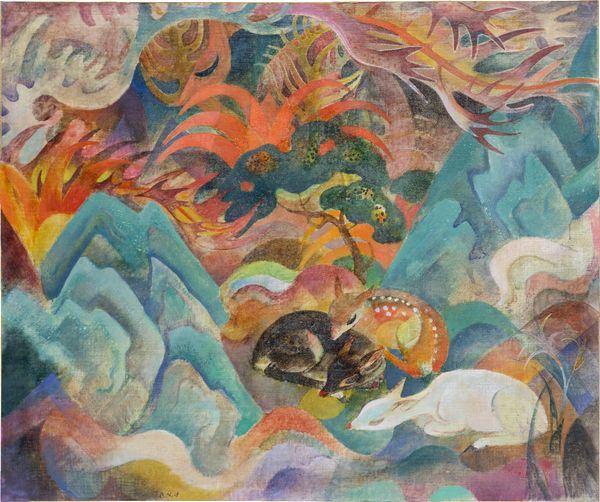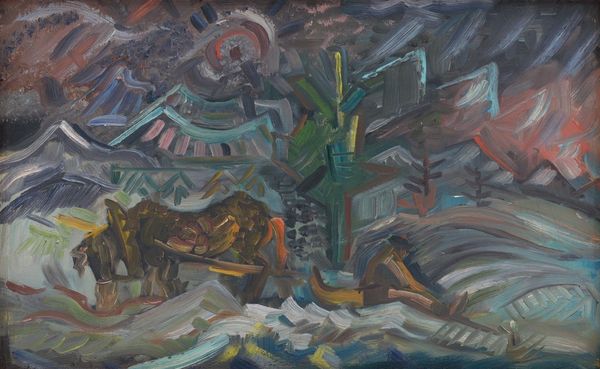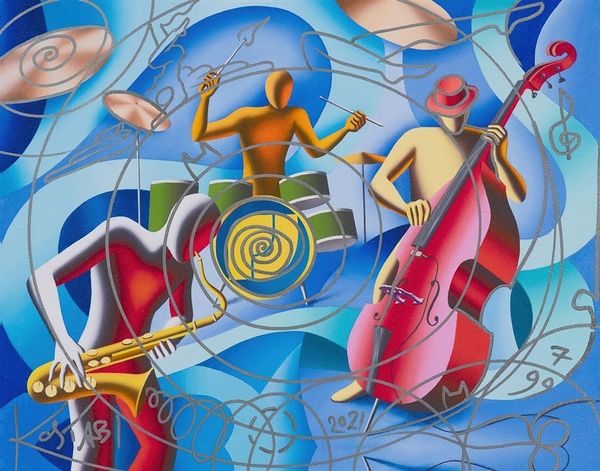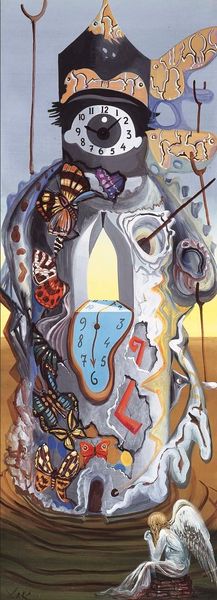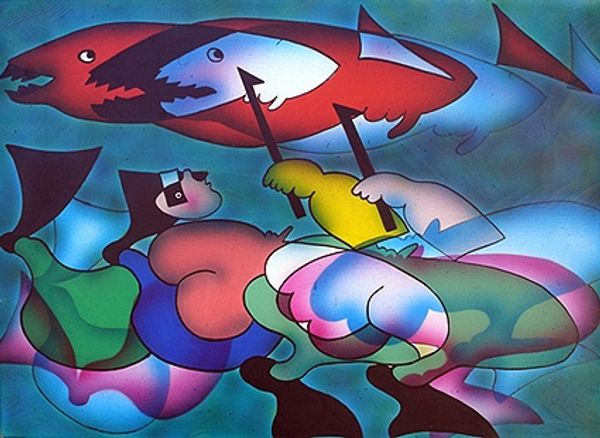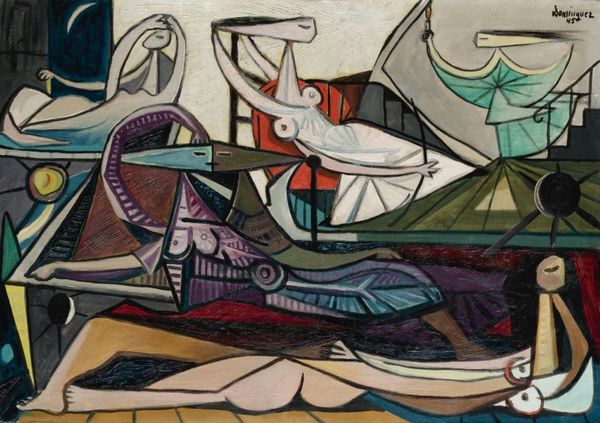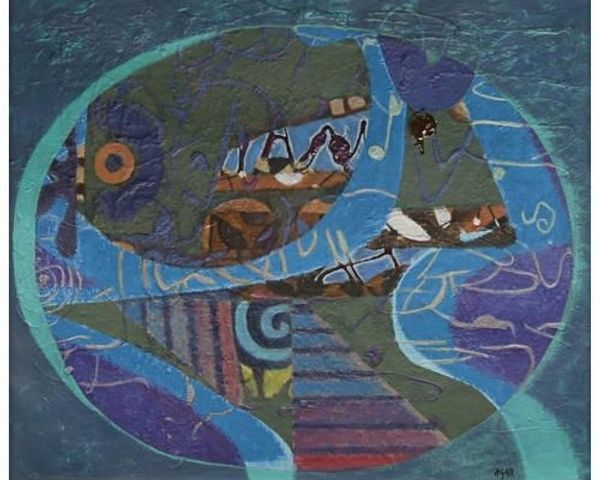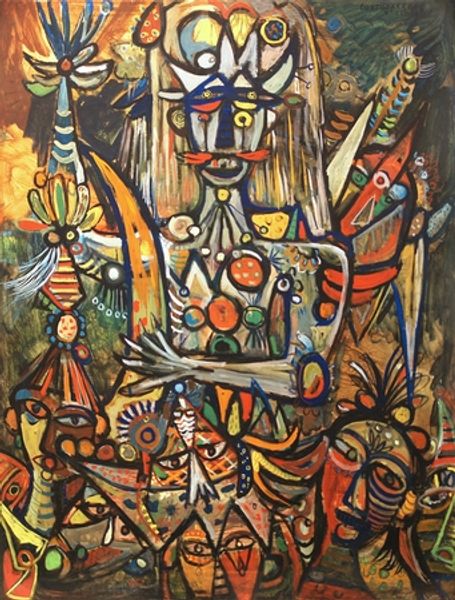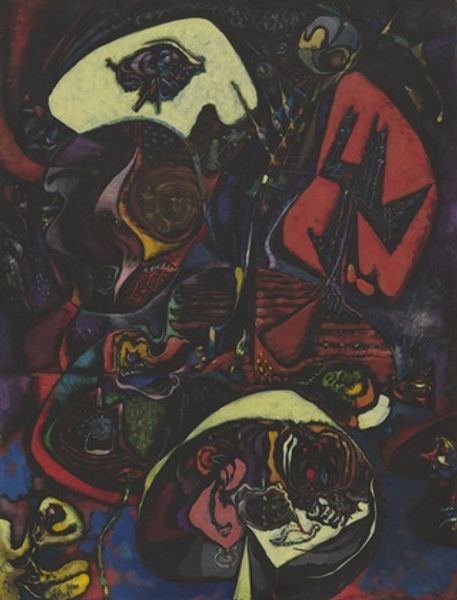
tempera, painting, acrylic-paint
#
contemporary
#
tempera
#
painting
#
landscape
#
acrylic-paint
#
figuration
#
acrylic on canvas
#
naive art
Copyright: Rita Angus,Fair Use
Editor: Here we have Rita Angus's "Fish V" from 1969. It seems to be rendered in tempera and acrylic. The first thing that strikes me is how flat everything seems; there's almost no depth, giving it an almost dreamlike quality. What do you see in this piece? Curator: Well, I see a conscious deployment of archetypal symbols. Notice how the fish, a common symbol of fertility and abundance, are rendered with this deliberately naive, almost childlike simplicity. What do you suppose that says about the artist’s intent? Editor: Maybe to connect with primal ideas of nature, like an Edenic vision? Curator: Precisely! And the lobster, prominently placed, disrupts that harmony. In many cultures, the lobster symbolizes transformation, adaptability, even resilience. It injects a subtle tension. But do these symbols feel personal or universal in this work? Editor: More universal, I think. The artist isn’t necessarily telling her own story, but something more collective. Curator: I agree. Consider also the lack of traditional perspective, reinforcing this sense of timelessness. Angus isn't trying to capture a specific moment, but rather tap into a shared cultural memory of the sea, and the creatures within it. The flattened forms create an emblematic image, less about realism and more about an enduring idea. Editor: It’s amazing how a seemingly simple painting can be so layered with meaning! I'll definitely look at paintings differently from now on, paying closer attention to the symbols artists use. Curator: Indeed. It's like reading a visual language, unlocking deeper levels of understanding, revealing something familiar yet novel each time.
Comments
No comments
Be the first to comment and join the conversation on the ultimate creative platform.
